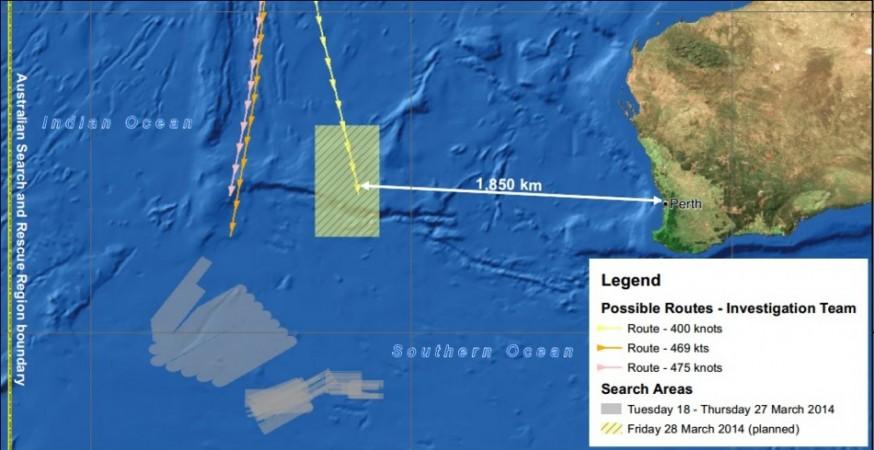
The search and rescue teams may have only as little as five or six days to find out the crucial 'black box' of the missing Malaysia Airlines plane MH370, so that world can know what really happened to the ill-fated plane.
With only about 30 days of battery life, the black box - which emits pings or sound pulses to reveal the plane's location - will fall silent on 7 April or thereabouts. And if that happens, all hope of finding anything related to the ill-fated aircraft will be lost. Additionally, searchers will thereby be forced to undergo an exhaustive search of the large and unmapped ocean floor; a process that will likely take years, possibly decades.
Even as the mystery surrounding the plane continues to baffle the aviation industry, the search area was dramatically shifted further north, based on a new data suggesting the plane did not travel as far as previously thought.
While the new search area is based on analysis and not really any credible proof, the chances of finding the actual wreckage is still at minimum. Additionally, even if the multinational team of military and civil aircrafts finds the debris from the flight, finding the black box before it runs out of battery is not an easy task.
The process is getting delayed with each passing day. Australia currently awaits the arrival of a defence vessel in Perth, which could take equipment with the ability to scan through and find the black box. It is expected go to the new search area, which is located some 1,100 kilometers north east of the previous focus area. But as the Wall Street Journal notes, once the Australian ship departs the port, it will take several days before it is in the position to deploy the advanced equipment underwater, aimed to find the flight recorders.
The Journal reported, citing Christopher Johnson of the US Naval Sea Systems Command, that the Towed Pinger Locator-25 or TPL-25, supplied by the US Navy, is a sensitive hydrophone that can be dropped inside the water to a depth of about 1,000 feet off the sea bed. It is designed to intercept sounds similar to the pings sent by black boxes.
The device, however, has a limited range, which could potentially restrict its usefulness.
"Identifying where the plane went down is critical, since we need to be relatively close for the system to work," Jonhson told the news outlet.
The new search area, cited by the Maritime authority, is an enormous area of 123,000 square miles - a region significantly bigger than the entire United Kingdom (94,060 sq mi ). It would take more than two years to find a possible lead, if searchers were to comprehensively look for the black box using the TPL-25.
















